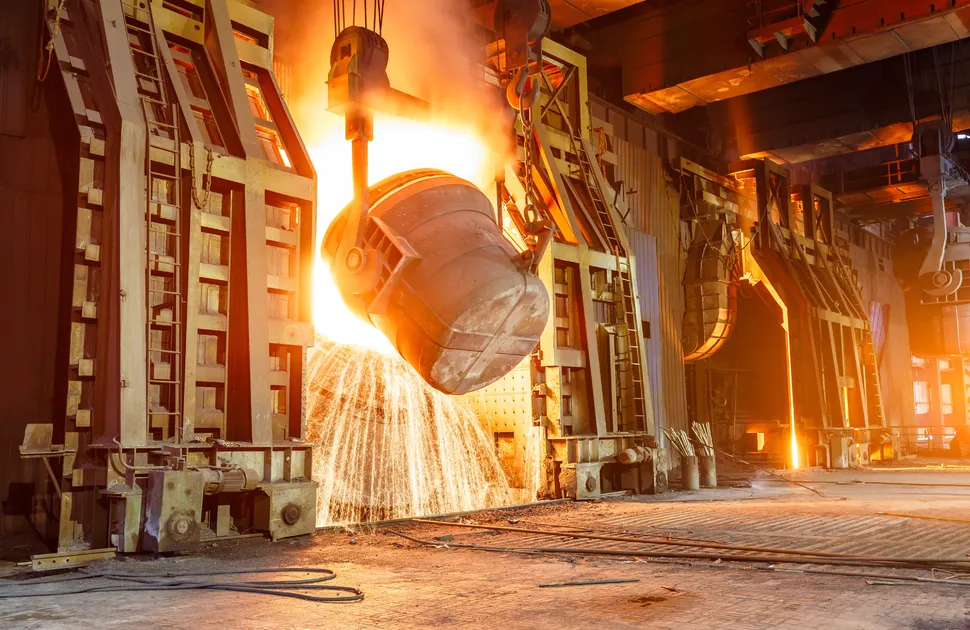How Will Coronavirus Pandemic Affect Global Steel Production in 2020 & 2021?
Early indications suggested that 2020 would be a year of modest economic recovery. Activity had been trending downwards since the zenith reached in the spring of 2018. Both governments and businesses had hoped that the start of the new decade would coincide with an upturn in economic growth. However, the coronavirus pandemic and subsequent lockdown measures have thwarted any such possibilities.
The International Monetary Fund (IMF) recently downgraded its economic growth projections. Global GDP is forecast to fall by 3 percent, in 2020. The reduction anticipated for the advanced economies is more substantial, at 6.1 percent.
The euro area is expected to be among the weakest performers, with a decline of 7.5 percent predicted. Figures of this magnitude are unprecedented. They are also unsurprising given the current circumstances, with some market sectors being brought to a complete standstill.
Largest impact in Europe
In Europe, the proliferation of Covid-19 and the substantial economic contraction is mirrored in the region’s steel output statistics. EU crude steel production decreased by 10 percent, year-on-year, in the first quarter of 2020. A reduction of almost 30 percent is predicted, in the April/June trimester. Output in this period is forecast at just over 30 million tonnes. This three-month total would be below the figure recorded in the first quarter of 2009 – the low point of the Great Recession.
North America is behind Europe in the timeline of the impact of the coronavirus outbreak. While the EU recorded a double-digit percentage reduction, North American crude steel output declined by only 3.6 percent, in the January/March period. Nonetheless, MEPS predicts a decrease of more than 20 percent, year-on-year, in the second quarter of 2020.
Steel production remained high, in China, during the early months of this year. Output increased by 1.3 percent in the first quarter, compared with the corresponding period in 2019. The annual outturn of almost 1 billion tonnes is forecast to decrease only slightly, in 2020, from the figure recorded in the previous year. Growth in steel exports will be difficult to achieve. Consequently, robust domestic demand will be required to support Chinese steel production, in the medium term.
The prevalence of infections by the coronavirus and subsequent lockdown measures have varied in countries across East and South Asia. Nonetheless, local steel demand has been substantially negatively affected. Furthermore, exports of steel and steel-intensive goods are reducing. Consequently, output is being cut in the major steelmaking nations of Japan, South Korea, Taiwan and India.
MEPS forecasts that global crude steel production will fall to 1.8 billion tonnes, in 2020. This equates to a reduction of 75 million tonnes, compared with the figure recorded in the previous year.
Two-thirds of this lost output should be recovered next year, if the virus is contained and no further widespread lockdowns are implemented. The predicted outturn of 1.85 billion tonnes, in 2021, is also dependent on the effectiveness of fiscal and monetary policies to support stricken economies and mitigate a prolonged downturn.
Recovery on the horizon?
A recovery in worldwide steel production depends, primarily, on an upturn in market demand. The authorities in many countries are starting to gradually ease their lockdown restrictions.
The potential exists for steel-intensive industries to rebound faster, at least initially, compared with a number of tertiary sectors, such as hospitality and retail. Automation in modern manufacturing aids the implementation of safety measures, such as social distancing, which will be beneficial. The pace of the anticipated upturn in demand is expected to vary across steel-consuming sectors.
A slow improvement is anticipated for manufacturers of machinery and equipment. The resumption of production in that sector is taking place but with a low rate of capacity utilisation. Investment levels, worldwide, are expected to remain weak, in the near future.
Long-term opportunities have arisen to reassess the structure of existing supply chains. This could result in less reliance on imports from third countries. A more localised network of parts suppliers has the potential to offer greater certainty, especially during periods of crisis.
Although staff shortages were noted, many projects in the construction industry continued during the lockdown. Governments may look to that sector as a means of stimulating economic recovery. Nonetheless, public debt concerns remain. Furthermore, observers question the need for certain infrastructure schemes, if the “new normal” involves changes to working habits and travel requirements.
Transportation industry woes
Automotive supply chains were severely disrupted, in recent months. Numerous Western carmakers announced production cuts, due to component shortages, prior to the implementation of lockdowns. Interruptions to the supply of parts are expected to persist, in the short term.
Sales of passenger vehicles are forecast to be curtailed by deteriorating consumer confidence, rising unemployment and declining incomes. Weak business conditions are predicted to restrict investment and fleet replenishment schemes. Consequently, adverse effects on demand for commercial vehicles are anticipated.
The surplus supply of oil has resulted in crude prices falling to record lows. Furthermore, global seaborne trade of goods is reducing. These factors are expected to adversely affect orders received by the shipbuilding industry, in the medium term.
Perhaps the largest impact on the transportation sector, from the coronavirus, is being witnessed in the aviation industry, which faces an existential crisis. Many observers expect fundamental changes to be undertaken to ensure the sector’s survival.
It is clear that many steel-consuming sectors face a plethora of hurdles on the road to recovery from the coronavirus pandemic. Those businesses and governments hoping for better times ahead will have to rely on their own ingenuity to overcome the unparalleled challenges that the world now faces.

Source:
Steel Price Outlook
MEPS Steel Price Outlook is a detailed 5-year steel price forecast with data focusing on Europe, North America and Asia.
Go to productRequest a free publication





